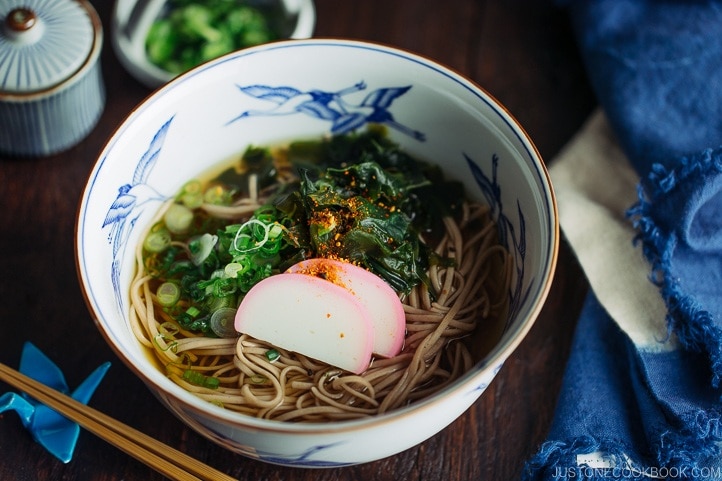
Cross over into the New Year with a piping hot bowl of soba noodle soup – a tradition called Toshikoshi Soba. It’s a simple Japanese noodle dish to melt away the hardship of the past year and welcome the journey ahead.
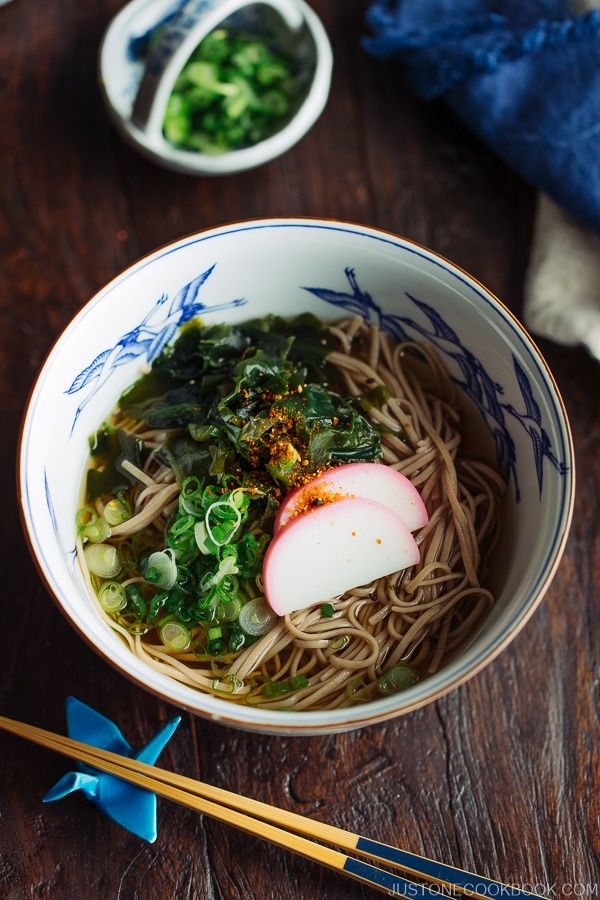
On New Year’s Eve, or Ōmisoka (大晦日), it is a custom for Japanese to reflect on the past year and usher in the coming year, all while enjoying a bowl of hot soba noodles, called Toshikoshi Soba (年越し蕎麦), or year-crossing noodle. What better way to cross over a symbolic bridge than slurping up soba noodles!
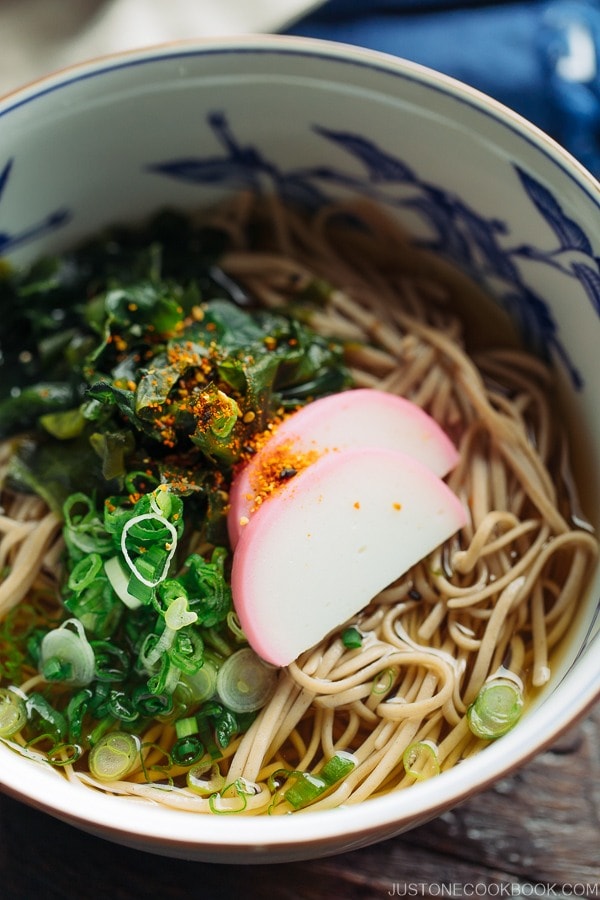
What is Toshikoshi Soba (New Year’s Eve Noodles)?
The New Year in Japan is about beginning with a fresh, clean slate. That’s the essence of Toshikoshi Soba – starting out simple with a hot soba noodle dish that is healthy and easy to make, and just happens to be a bowl full of symbolism. More on that later.
The soba noodle dish served on New Year’s Eve is usually in its simplest form – buckwheat soba noodles served in a hot dashi broth with finely chopped scallions. But the basic tradition of Toshikoshi Soba can be taken to the next level by adding in tempura, fish cakes, or raw egg. I believe the New Year should also start out deliciously!
The Toshikoshi Soba recipe I am sharing today is featured on the popular Japanese TV drama called “Shinya Shokudo (深夜食堂)” or “Midnight Diner: Tokyo Stories” on Netflix.
Midnight Diner features dishes that are more representative of Japanese home cooked recipes that you might not have seen in your local Japanese restaurants. “New Year’s Eve Noodles” episode is Season 1, Episode 10 on Netflix.
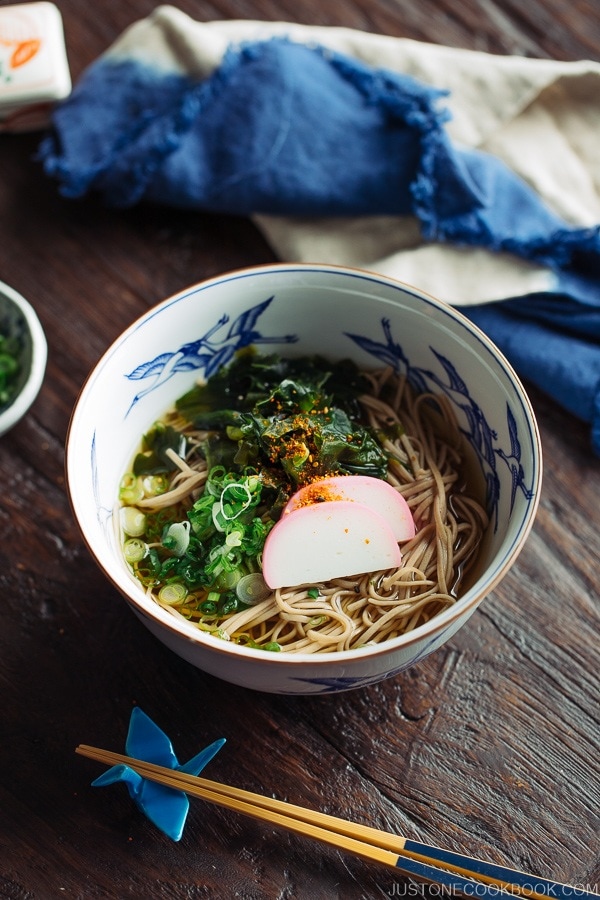
History & Culture of Eating Soba Noodles on New Year’s Eve
The custom and its name differs by region in Japan, but the tradition of eating soba noodles on New Year’s Eve started as early as the 13th or 14th century. However, not until the more recent Edo Period – when the common class developed customary religious and superstitious rituals – did Toshikoshi Soba become more established as an annual tradition on New Year’s Eve for most Japanese people.
With the hope of good fortune in each bowl, it’s easy to imagine the custom being adopted quickly from family to family, slurping in the symbolism of soba noodles:
• To enjoy a fulfilling, peaceful life with every slurp of the long soba noodles.
• To break free from the past like the soba noodle so easily breaks with each bite.
• To gather strength and resilience like the tough buckwheat crop.
• To grow your fortune just as buckwheat flour was once used by goldsmiths to gather up leftover gold dust.
Superstitious or not, enjoying toshikoshi soba has become one of the most enduring traditions observed by the Japanese people in the New Year.
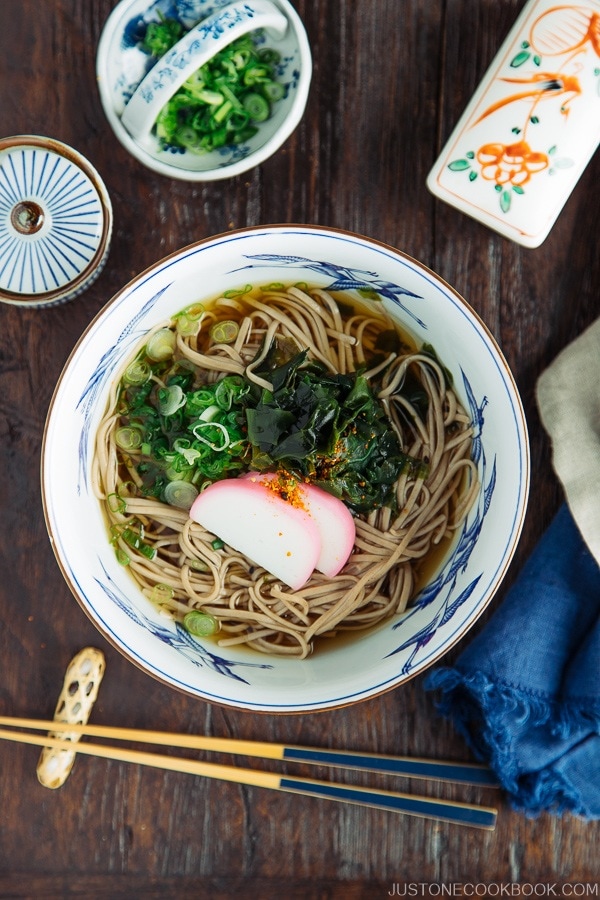
Make Good Dashi for Toshikoshi Soba (New Year’s Eve Noodles)
For a simple noodle soup dish, a good tasty broth is elemental. After all, you want to taste the broth that’s so good that you want to drink up all the soup.
This dashi based soup broth is light, yet savory and umami rich from all the essence from kombu and katsuobushi. Unlike chicken or vegetable stock, Japanese soup broth is fast and simple to make. I wouldn’t recommend taking any short cuts like using dashi powder, unless you have absolutely no choice. The difference it makes is tremendous.
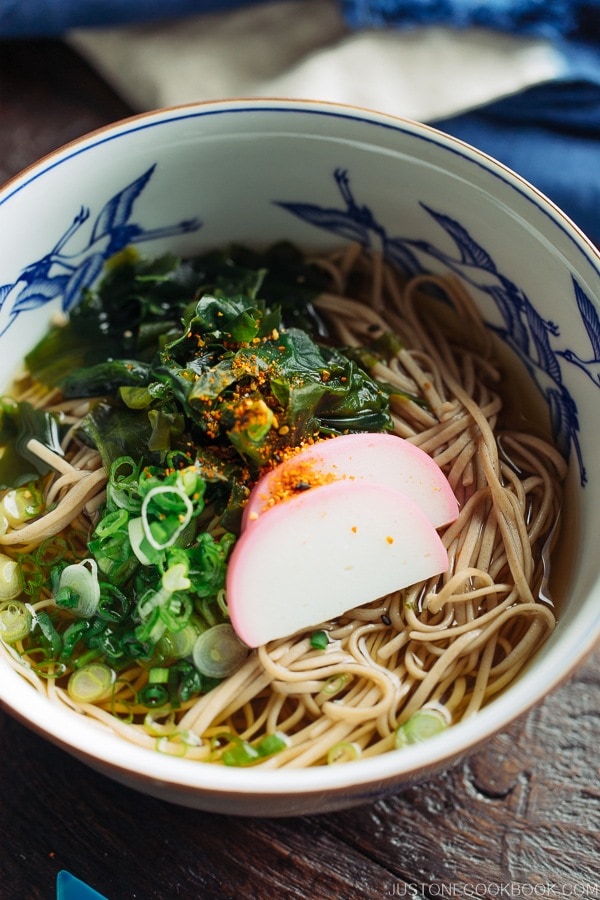
Vegan/Vegetarian Soba Noodle Soup
To make a vegan or vegetarian friendly toshikoshi soba, it is as simple as switching out some ingredients just as below:
- Skip katsuobushi (dried bonito flakes) and make Kombu Dashi with just kombu.
- Skip kamaboko (fish cake) and add tofu or any other vegetarian/vegan friendly toppings.
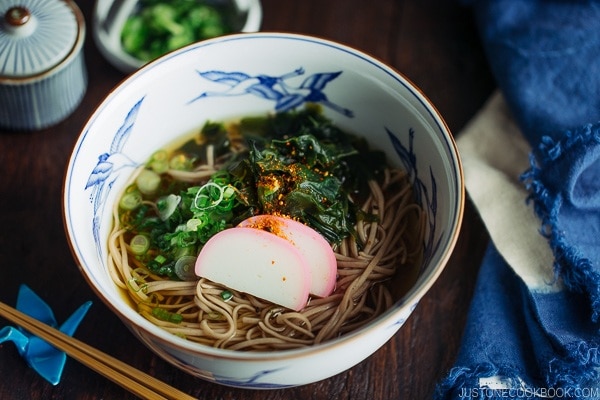
After all the hearty holiday feasts and sweets, Toshikoshi Soba is a welcoming and comforting dish this time of the year. In the company of family and friends, all warming up over steamy bowls of nutritious soba noodle soup, is a tradition I hope you can adopt to ring in the New Year.
Don’t want to miss a recipe? Sign up for the FREE Just One Cookbook newsletter delivered to your inbox! And stay in touch with me on Facebook, Google+, Pinterest, and Instagram for all the latest updates.
Toshikoshi Soba
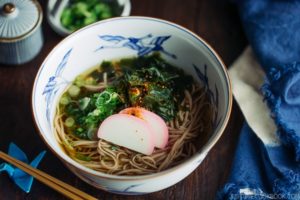
Cross over into the New Year with a piping hot bowl of soba noodle soup – a tradition called Toshikoshi Soba. It’s a simple Japanese noodle dish to melt away the hardship of the past year and welcome the journey ahead.
- 3 cups water ((3 cups = 720 ml))
- 1 piece kombu (dried kelp) ((4" x 4” = 10 cm x 10 cm))
- 1 cup katsuobushi (dried bonito flakes) ((1 packed cup = 10 g)(skip for vegetarian/vegan))
- 1 Tbsp sake
- 2 Tbsp mirin
- 2 Tbsp usukuchi soy sauce ((or regular soy sauce))
- ¼ tsp kosher salt
- 7 oz dried soba noodles (buckwheat noodles) ((7 oz = 200 g))
Toppings
- 2 Tbsp dried wakame seaweed ((2 Tbsp = 4 g = 0.1 oz))
- 4 slices kamaboko (fish cake) ((Skip for vegetarian/vegan))
- 2 green onions/scallions
- Shichimi Togarashi (Japanese seven spice)
- Gather all the ingredients. [Optional] Soak the kombu in water for overnight. If you don’t have time, start soaking the kombu as soon as you can. Bring a big pot of water to a boil for soba noodles.
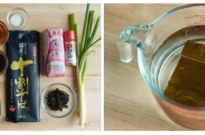
- Add the kombu and kombu water (kombu dashi) in a medium saucepan. Slowly bring it to a boil over medium low heat (so kombu dashi will be more flavorful) . When almost boiling, discard the kombu (you can make Furikake rice seasoning with the leftover kombu).
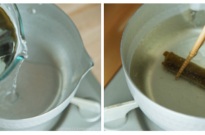
- Add the katsuobushi and simmer for 30 seconds. Then turn off the heat and let katsuobushi sink to the bottom of saucepan. Let Katsuobushi steep for about 10 minutes (meanwhile you can prepare toppings).
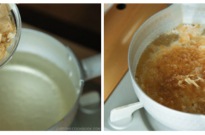
- Drain and reserve the dashi in the measuring cup (or bowl) and discard the katsuobushi (you can make Furikake rice seasonings with the leftover katsuobushi). Put the dashi back in the saucepan.
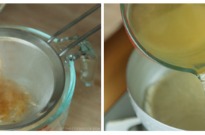
- Add the sake, mirin, usukuchi soy sauce (or regular soy sauce), and kosher salt
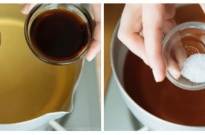
- Bring it to a simmer and set aside.
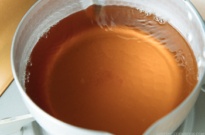
- Re-hydrate wakame seaweed in 1 cup water. Then squeeze the water out and set aside.
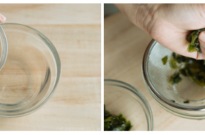
- Thinly slice the green onion.
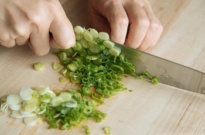
- Detach the bottom of the kamaboko (fish cake) from the wooden board and slice 4 pieces.
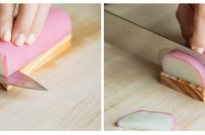
- In a boiling water, cook soba noodles according to the package instruction, but 30 seconds less. Unlike pasta, you do not need to add salt to the water.
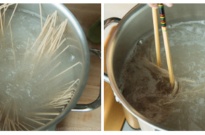
- Drain the soba noodles and rinse the noodles under cold water to get rid of the starch. Serve the noodles in the bowl.
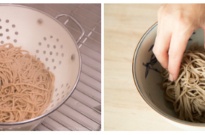
- Pour hot soup broth over soba noodles, top with kamaboko, wakame seaweed, and green onions. Enjoy while it’s hot.
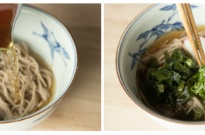
Recipe by Namiko Chen of Just One Cookbook. All images and content on this site are copyright protected. Please do not use my images without my permission. If you’d like to share this recipe on your site, please re-write the recipe in your own words and link to this post as the original source. Thank you.
from Merah Hati Cintaku http://bit.ly/2EXyoIU
via merahhaticintaku.blogspot.my
No comments:
Post a Comment